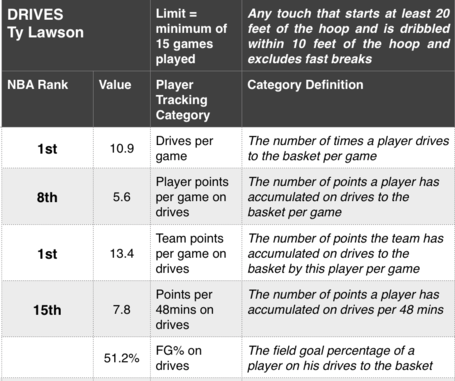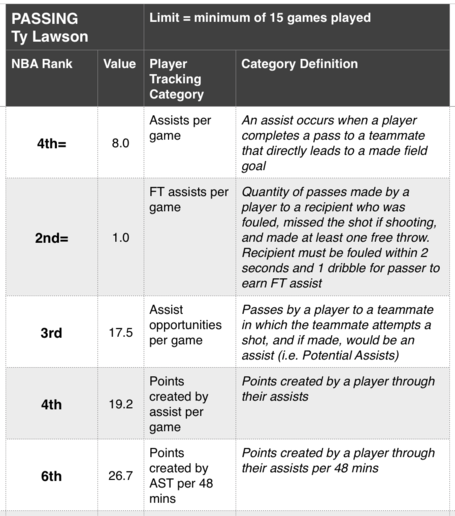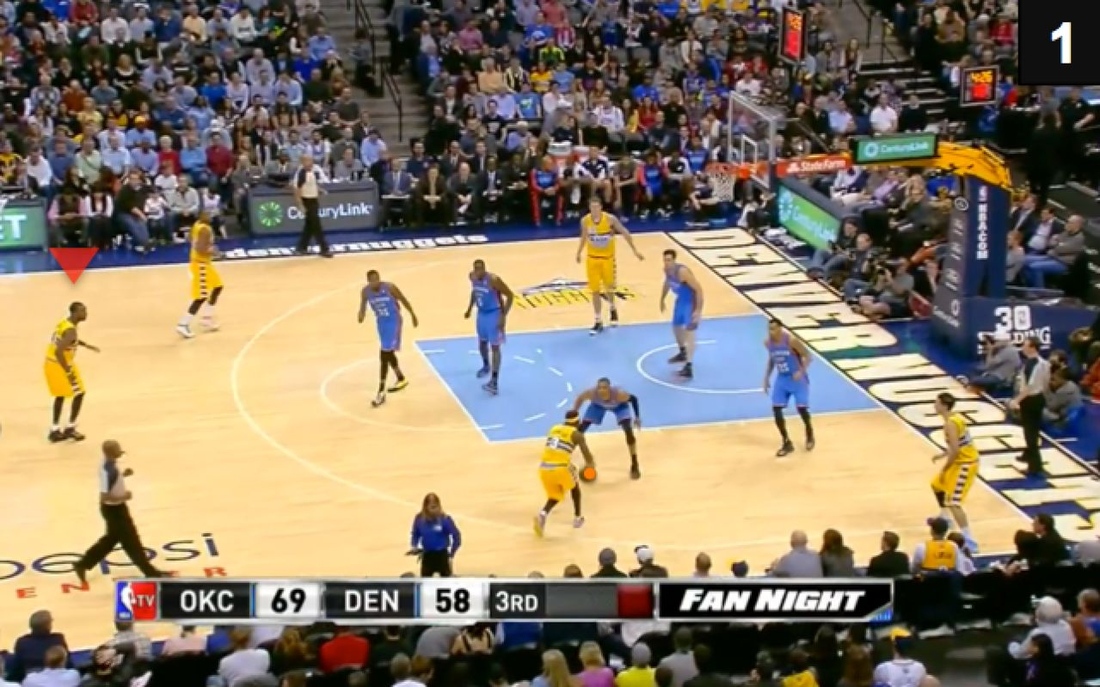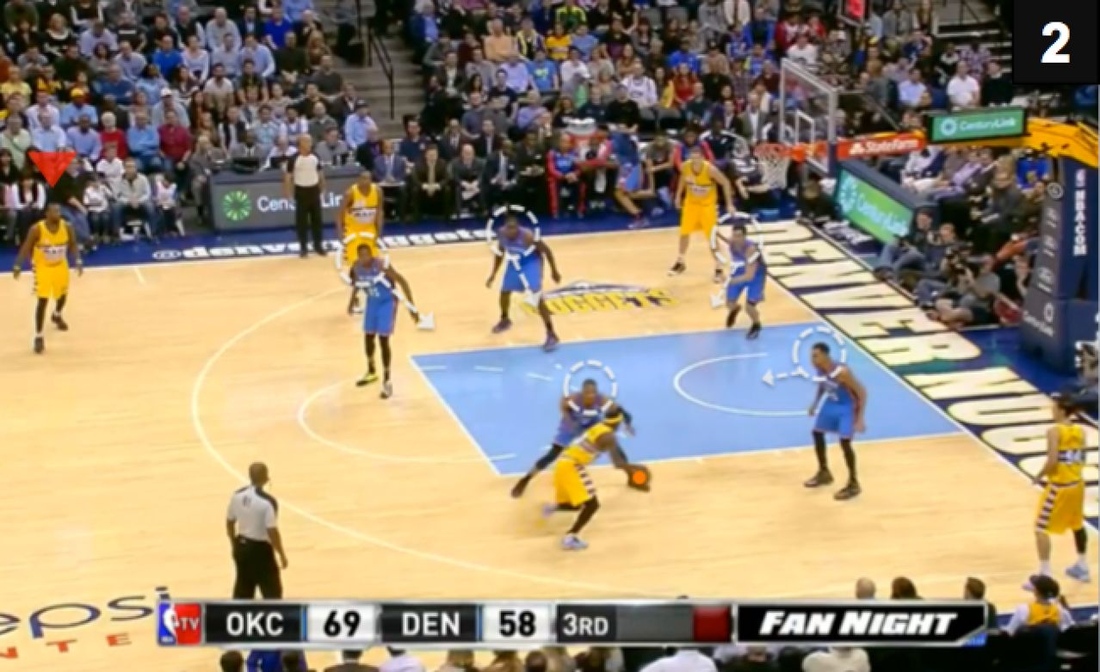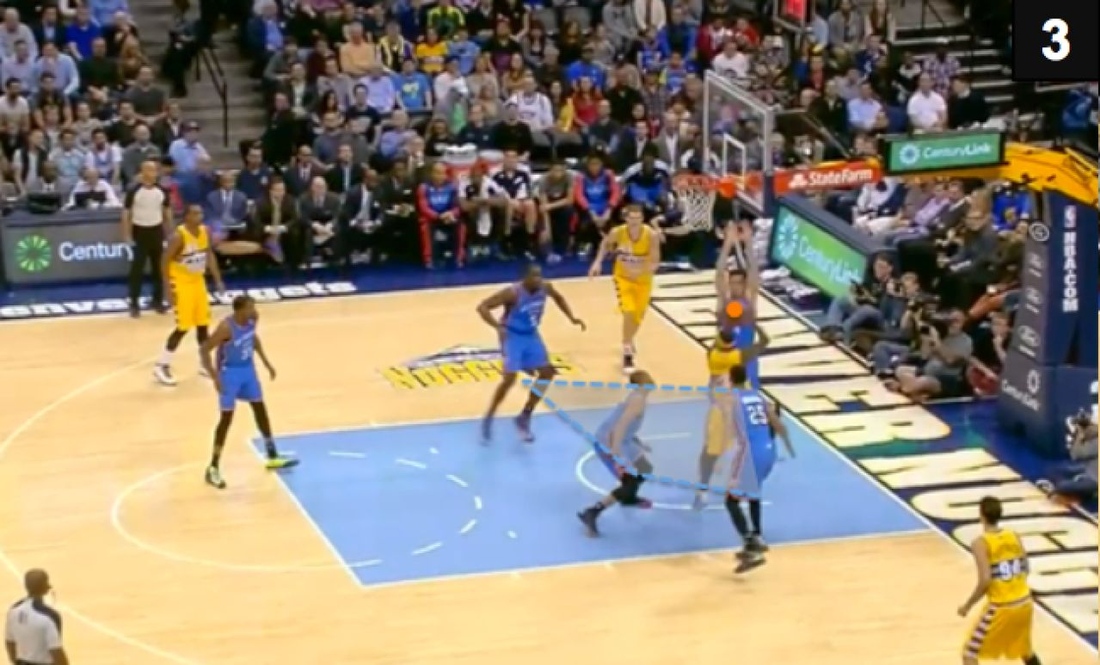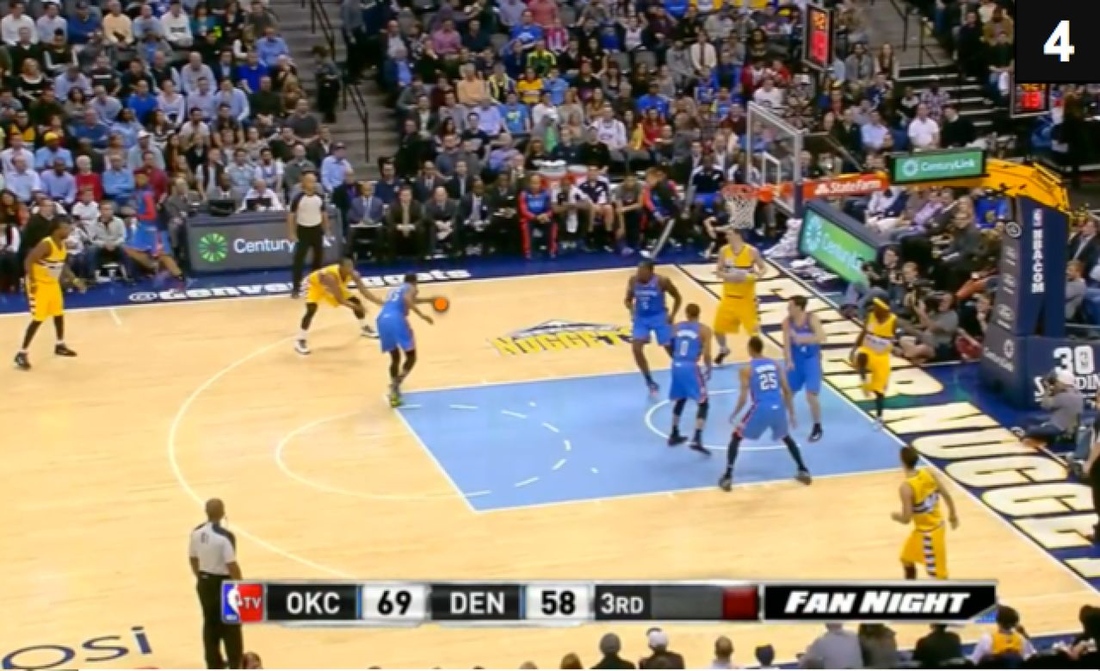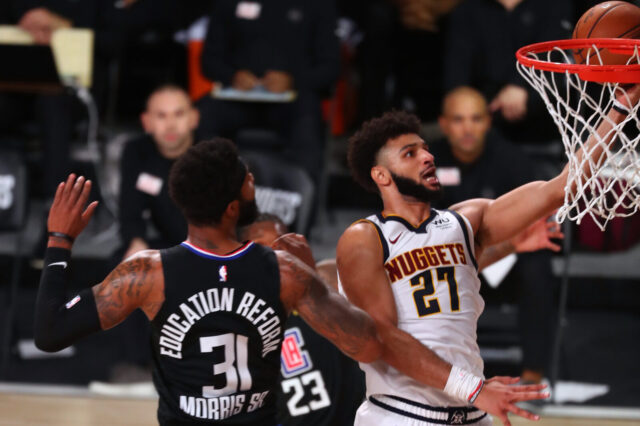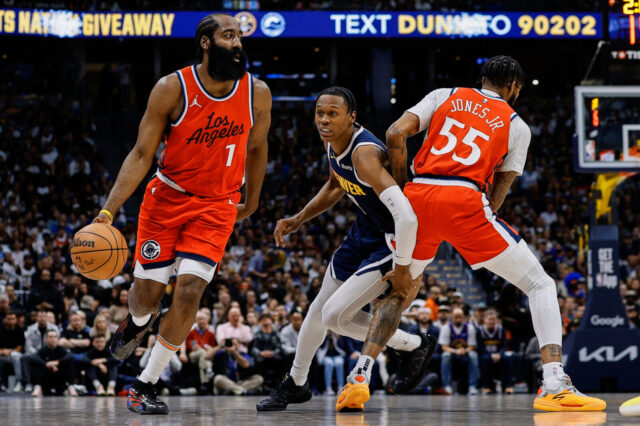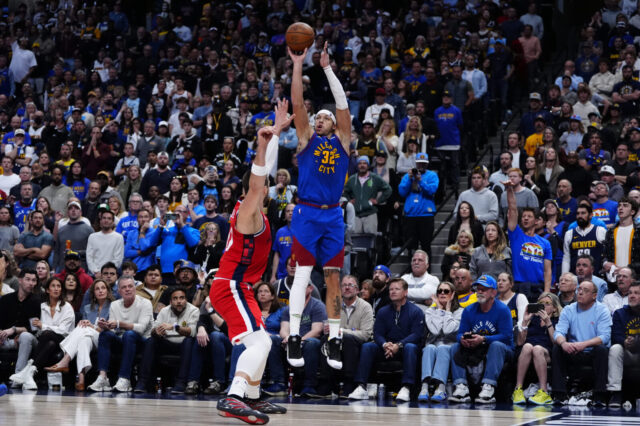The 2013-2014 season marks the entry of a very rich new data source into the NBA. While around half the teams in the NBA had previously used SportVUs player tracking cameras, this is the first season in which every team will us them to capture every game. If you are unfamiliar with SportVU tracking check out the following description from NBA.com (click on the title or other links for more info and the stats).
Player Tracking is the latest example of how technology and statistics are changing the way we understand the game of basketball.
Using six cameras installed in the catwalks of every NBA arena, SportVU software tracks the movements of every player on the court and the basketball 25 times per second. The data collected provides a plethora of innovative statistics based around speed, distance, player separation and ball possession. Some examples include:how fast a player moves, how far he traveled during a game, how many touches of the ball he had, how many passes he threw, how many rebounding chances he had and much more.
So what will all this information provide?
At this stage the sky is the limit, and it is up to teams to think of ways they can use this amazing amount of information effectively. Some teams (especially the ones using the cameras in previous seasons) have leapt ahead in the work of trying to transfer the millions of co-ordinate data points into useful intelligence for decision making (if you have not seen Zach Lowe's Grantland article on the Raptors and their use of SportVU from March this year it is a must read in this area).
For fans this data also offers a tantalizing combination of statistic information and the eye test with which to analyze the game and its players. NBA.com/stats has introduced a new category on their site called 'Player Tracking' which employs this data (see above). While this is very much a 'first generation' attempt to process this data for fans (i.e. disappointingly there are no visualizations possible yet despite this being such a visual style of data) there are already some fun and interesting new stats available for analysis:
Want to know who the ultimate stats stuffers are in rebounding? check out the Uncontested Rebounds stat in Rebounding Opportunities
Which team makes their guards run around like crazy (currently has 5 players in the top 15 of the distance traveled per 48mins)? Check out the Speed and Distance stats.
On a more Nuggets related note, since the data is now starting to get to a reasonable sample size, I decided to rummage around in the Player Tracking stats and see what Nuggets related insights I could gleam.
Note: I have copied the Nuggets related data into tables, so it can be digested for this post but it is actually very useful to see the full tables as you can compare the surrounding players and get context more easily, and I encourage everyone to spend some time on NBA.com/Stats and sort and analyze the data yourself to see what you can learn.
1. Ty Lawson – The driving creator
Ty Lawson is known for his driving ability and it seems he has taken it to another level this season under Brian Shaw's system. He is widely regarded as Denver's best player and the key to their success. Not all comments have been positive though and recently comments about how Ty is not always 'aggressive' enough have re-surfaced. One of the categories under Player Tracking is Drives and this offers some relevant stats to help gauge Lawson's impact.
Firstly it can be seen that Ty is driving the ball a lot, first in the NBA in fact. He is also creating the most team points per game on drives. He suffers somewhat in the personal points he generates compared to some other players who drive less than he does, ranking only 8th per game. It could be argued that this shows Ty is not being aggressive enough with his own shot on drives and this is shown in the player points on drives stats. However the fact that Ty is creating the highest amount of team points per game on drives of any player in the NBA shows he is still being very successful in generating points by driving. While the modern NBA has more of an emphasis on scoring point guards, I personally think a team can still be successful with a playmaking first point guard, so if Ty keeps generating team points on drives at this rate then if he needs to be 'more aggressive' it might be in upping the number of drives per game even further.
There is also a Passing category with which we can look at for further insight:
As can be seen in the table above, Ty ranks highly in all these stats and does especially well in FT assists per game (likely coming from those passes to the big men in the paint on drives where they get hammered before they can finish). The slight drop in ranking from the top (as he was in Drives) emphasize that Ty is at his best playmaking on the drive.
Also I think the Assist Opportunities per game (Potential Assists) is a really interesting new stat as it offers a chance to compare playmaking for assists without the assisted player having to make the shot. I have often seen discussions where people say a player would get more assists if he had better teammates who could actually finish and this stat could offer some objective insight into that debate.
The Importance of Spacing
To offer some further material for thought I have broken down a Ty driving play from the third quarter of the Thunder game. The play results in a steal by Kevin Durant and on the broadcast Scott Hastings blamed the turnover on the Thunder being able to sit in the passing lanes as Ty was not being aggressive enough. While it is true all Thunder eyes were on Ty during the play, after review it seems poor spacing is in fact what ultimately caused the turnover.
This is only a single example but helps suggest that while Ty might need to be continue to be aggressive in driving it may not always be that he needs to try and finish more, but perhaps that the other Denver players must really be aware of good spacing off of Lawson drives or turnovers can result even when Ty is successful in collapsing the defense to create space.
1. The play begins with Ty sizing up Russell Westbrook on the wing. Note the position of Jordan Hamilton in the middle of the court.
2. As Ty begins his drive all five Thunder players have their attention directly turned to Ty. Jordan is now on the far left of the court well outside the three point range. He has effectively taken himself out of the play as a threat, as there is little danger of him shooting from this position even if Ty passes to him. This allows his defender (Kevin Durant) to drop down to the weak side corner of the paint without fear of Hamilton doing anything. The only reason I can think of that Hamilton would do this is to draw Durant to the weak side to create space for Lawson. However, while this would make sense to help a player like Carmelo Anthony, who often isolates to create his own shot, this is the wrong move for spacing on a Lawson drive as we shall see.
3. In this frame Ty has just beaten Westbrook on the drive and it starting a jump pass (to Darrell Arthur). He has successfully collapsed the defense with four Thunder players surrounding the restricted circle and Durant at the corner of the paint. As Arthurs man (Kendrick Perkins) has collapsed, Arthur should be open (standing in one of his catch and shot spots). However due to the poor spacing created by Hamilton’s move (he remains out of the picture at the left) Durant is able to watch Ty and cover the pass to both Hamilton and Arthur.
4. Ty passes to Arthur but Durant is able to move in and pick off the pass and the Nuggets turn it over.
With such an elite playmaking driver like Lawson players can not afford to take themselves out of a play like this through poor spacing. Jordan would have been better served if he had remained in the middle of the court, or if he wanted to create space for Lawson he should have moved left then cut back hard to the three point line (to about where the refs head is in the final frame) as soon as Lawson started his drive. This would have put him in a position for a pass and forced Durant to choose between defending either Arthur or Hamilton on the pass rather than being able to cover both.
2. Touches/Possession Stats featuring the Denver Frontcourt
Another category I found interesting was one in the Touches/Possessions: Points per half court touch. Denver has 4 players in the top 20 (of the 257 players with over 500 total touches). This suggest that these players are being very efficient half court scorers and is a positive sign for a team trying to develop a more playoff ready half court offense. All four of the Denver players have a low time of possession indicating they are neither ball handlers or players who need the ball to create their shots. Looking at who the players are this makes sense and may link to Lawson's creating success above.
Here are the four players stats in a table:
I will now have a look at each players half court game using these stats and the %Time stat on Synergy which gives the percentage of a players time split over each play type to give a bit of extra insight.
Timofey Mozgov
Ranking 6th in the NBA in PTS per half court touch, Timofey Mozgov is proving to be highly effective this season for the Nuggets as a Center and has turned many previous haters around. Offensively he has a nice array of simple but effective post moves and has shown a nice touch on his hook shot (if Mozgov currently has a weakness in his half court game it is probably in offensive put backs in which he is only shooting 40.7%). Using the %Time stat from Synergy the top two half court shot types Mozgov takes are: Cut (which includes quick post moves which don't involve dribbling i.e. catch, turn and shoot) and Post Up.
In the following video breakdown I have put together some examples demonstrating how Mozgov is able to get good shots off quickly in the post and in other plays that have led to his sixth ranking.
The first two plays show Mozgov in the post. In both plays he uses a lefty hook from good post position (note how deep he is able to get against Carlos Boozer in the second play).
In the third play Mozgov cuts quickly into the paint and finishes with a nice catch and shot right handed hook shot before Nickola Pekovic can react and challenge.
In the fourth play Timofey shows a nice turnaround jumper in the post.
The fifth play is a Pick and Roll with Nate Robinson which Mozgov finishes at the rim.
The final play demonstrates how Mozgov will often cut into the paint to establish position and if he doesn't receive the pass he will move out of the paint to avoid a 3 second call before re-cutting back in to try again. This is an effective move in which Mozgov can often get great deep post position on the 2nd or 3rd try while also occupying the centers attention and avoiding clogging the lane for driving players for too long.
Kenneth Faried
Kenneth Faried appears right after Mozgov in 7th place. He receives more total and elbow touches per game than Mozgov but less close touches. His top two shot types on Synergy are Cut (which would include his baby hook shots) and Offensive Rebound plays and his efficiency is definitely boosted by his high energy game on the offensive boards (he is currently 9th= in the NBA in second chance points).
JJ Hickson
Hickson averages more touches than either of the first two players and is often involved in pick and rolls for Denver, proving to be an effective 'Roll Man'. He is able to roll quickly to the hoop and often finishes strongly with a power dunk. Following this, Pick and Roll Man and Cut are his top two play types by time on Synergy.
Jordan Hamilton
Unlike the other Nuggets players in the table Jordan is not a power player. This can be seen in his low number of both close and elbow touches per game and the fact that Spot Up is the play type that dominates in %Time on Synergy. The fact he appears in the top 20 in the NBA in PTS per half court touch shows how efficient he has been since finally settling into his role as a gunner for the Nuggets. The only other shooters in the top 20 in this category which dominated by Centers and Power Forwards are Klay Thompson and Kevin Durant (and you could probably also include stretch four Ryan Anderson as well).
The following breakdown shows some examples of how Hamilton is able to achieve an effective half court scoring rate on a low time of possession despite not being an inside player.
The first example is a good demonstration of the benefit of Lawson driving even when this does not lead directly to a score. Note how the Bulls defense collapsing around Lawson creates space for Hamilton to work. Luol Deng (who is defending Hamilton) is forced to sag due to his help defense responsibilities in case Lawson goes to the hoop, and this means he then has to close out hard on Hamilton after the pass, which allows Hamilton to drive past him and draw a shooting foul in the paint.
In the second play Jordan receives the ball on the wing and Arthur sets a screen for him. The Nets defenders switch on the screen which gives Hamilton enough time and space to quickly get off a three.
In this play Hamilton comes from the baseline, sets a screen then receives the ball from Andre Miller curling to the hoop. Deng is able to bump him and halt the drive, however Jordan is able to find Mozgov and they run a nice quick handoff in which Timofey is able to deliver the ball and act as a screener so Hamilton is able to shoot a 3 pointer.
The final play shows how dangerous a little space can be against Hamilton in the secondary break before the half court defense gets fully set. Ty Lawson leads the break but after a slight fumble he slows down around the 3 point line. He then spots Hamilton trailing ahead of his defender (Corey Brewer) and delivers the ball to Hamilton who takes 1 dribble into a jump stop and delivers the three.
Conclusion
While the potential of SportVU player tracking has yet to be fully realized for either NBA teams or in its potential in adding to the fan experience, the initial stats offered at NBA.com/Stats offer some new ways to look at players and teams to try to answer questions and provide further insights into NBA Basketball. I have covered a couple of interesting topics related to the Nuggets above, but there are many more categories and stats I haven't mentioned and I would encourage everyone to jump in and have a look around the Player Tracking stats as soon as you have a chance.
Statistics and Rankings obtained from NBA.com/Stats and mySnergySports.com on December 18

